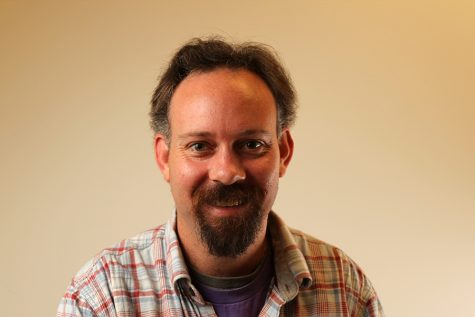Mathematics professor retires, leaves “unique” teaching legacy
May 31, 2017
Math professor Emanuel Baptiste will be retiring after dedicating 45 years to teaching Mathematics at Contra Costa College. Although he wasn’t able to attend the Retirement Reception and Staff Reunion in Fireside Hall on May 12, his former students, co-workers and colleagues described him as a unique individual.
There are many aggregates that make Baptiste’s teaching style unique, but one is that he looks for life examples for his students to apply to real-life situations and scenarios.
He has even used his own hobby and side-business as an example to show his students about the beauties of applying math to the tangible world.
Baptiste’s wife of 30 years Eugenia Bersano said, “He shows how you can apply math to building houses and buildings. He shows his students how there are also economics in building a foundation for a house, and how you manage money.”
Baptiste got his bachelor’s degree at San Diego State University and his master’s in science and mathematics at Northern Arizona University in 1972. When he first came to CCC he taught college algebra and calculus, and after three to four years he started teaching first, second and third level calculus courses.
He grew up in Ware, Massachussetts where he graduated from high school in 1955.
Baptiste drove to California with his brother, where he embarked on his teaching career.
“What I will miss most is the interaction with younger students,” Baptiste said.
Baptiste said that over the years he taught himself how to build and fix up houses. He said he fixed up one house in Alamo, three in Berkeley and remodeled a vacation home in Lake Tahoe. One of the houses he built in El Cerrito, consisted of building it from the foundation up.
Baptiste said during his teaching career he tried to talk to students at their level of understanding and always address their questions. “I tried to make it as simple as I could,” he said.
He began his teaching career in El Centro, California, where he taught mathematics.
He said he first got his start teaching high school mathematics and trigonometry, and was hired at CCC in 1972, where he taught until 2017.
“One thing is for sure, I’m going to spend a lot of time fishing during my retirement,” Baptiste said.
Long-time teaching colleague Hugh Walters shared an office and curriculum with Baptiste for several decades and said he just got better at what he did over the years. “My most memorable moments just have to do with working with him, and I still relish looking at the Contra Costa College sign from the freeway,” Walters said.
She said his teaching style can be described in one word: colorful.
Walters said he would hold many different colors of chalk in his hand between three fingers, so he could distinguish the different parts of the math equation from each other. Then, in order to face the class, he would turn around and write on the chalkboard with his back facing the board. “That takes a lot of dexterity to be able to write backwards, facing the classroom,” he said.
He said that Baptiste in the classroom was a person who demanded a high level of commitment from his students, and was very strict.
While some professors just go over a minimum amount of math problems in the classroom and assign much homework for the students to do on their own outside of class, it was the opposite with professor Baptiste. He made sure all students understood the material before leaving his classroom.
“He was very punctual, and he used to teach a lot of problems and took the time to go over them so the level of understanding was superb. By the time his students left his door, they knew all the material well. He was known to lighten up the class and would crack a joke here and there,” civil Engineering major Alami Afilal said.
Even for students who had stints in their educational careers and came back to school later when they were older, still said that the way he taught allowed them to retain the information more than any other teacher.
ASU President Safi Ward-Davis said, “He was approachable and took his time explaining the problems. He would even let the students do a couple of the problems to make sure they understood it. You could tell he was passionate about what he did, and although he talked in a soft monotone voice, he kept you engaged in the work.”
“I’m going to miss having a math professor who shows so much compassion for his students learning math,” Ward-Davis said.


